Huawei Mate X Revealed: 5G Foldable Phone Looks Stunning
It's hard to find words to do the Huawei Mate X justice, the company's first folding smartphone coming so close to resembling a sci-fi movie prop that it's hard to believe it will soon go on sale. Like the Samsung Galaxy Fold revealed last week, the Mate X transforms from the form-factor of a regular, everyday smartphone to a significantly larger device, similar in scale to a tablet yet arguably more manageable in the hand.
What's fascinating is that, though the two phones may both fold, they do so in such very different ways. Samsung's design sees the larger display have a single use, only in play when the Galaxy Fold is opened up into its fully-deployed tablet mode. The Huawei Mate X, though, is the exact opposite.
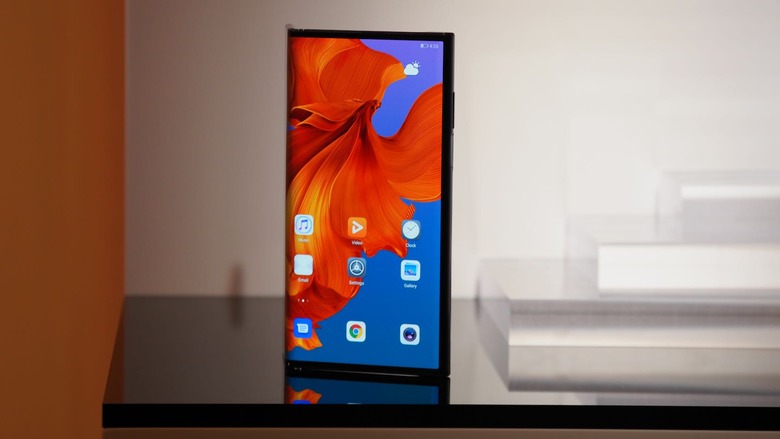
In Huawei's design, the large 8-inch touchscreen is also front and rear display, wrapping around the body of the device when it's closed. The back is sized slightly smaller, at 6.38-inches, in order to make room for the four cameras and flash, while the front display is larger at 6.6-inches.
Opened out in full, you get a glorious 2480 x 2200 pixel resolution. Closed, the rear comes in at 2480 x 892, while the front is slightly denser at 2480 x 1148 pixels. As for the nature of that display, for now all Huawei will say is that it's using OLED technology.
It's an astonishingly slender device. In tablet mode, the thinnest section is a mere 5.4 mm thick: in comparison, the iPad Pro comes in at 5.9 mm thick. When it's folded, the Mate X comes to only 11 mm. I suspect it'll be more comfortable for right-handed use, given the thicker grip section s positioned on the right side. On the back of that grip is a vertically-aligned triple camera system, along with a flash. Along its edge, meanwhile, is a combination power button and fingerprint scanner, just below the volume rocker.
From what I've seen so far, I do feel like the Mate X has a far better design than its Samsung rival. When it's in smartphone form, which is likely to be more often the case than not, the outer displays are each large and vibrant. In contrast, Samsung's closed Galaxy Fold leaves you with a mere 4.6-inch display. Huawei's design has another benefit, too: when closed, the rear display can be used for selfies with the Leica-engineered cameras.
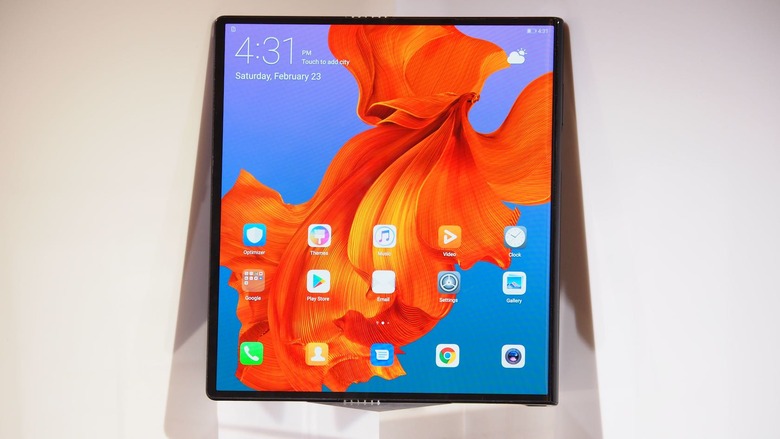
The magic happens underneath the display on the back, where what Huawei is referring to as its Falcon Wing Hinge design is found. While the name may be reminiscent of something you'd find on a Tesla Model X, the hinge itself reminds me of Lenovo's elegant watchband hinge, used in the Yoga notebook line. It's hard to say how well the hinges will hold up over time – or, indeed, the flexible OLED – without putting the device through its paces. However, from my limited time with the Mate X, I'm already liking what I see, particularly how flat and compact it is when folded up.
Perhaps surprisingly, Mate X isn't just going to be Huawei's first folding phone: it's also going to be the company's first 5G device. Unlike others in the industry, Huawei is making its own 5G modem to go with its own processor. "We're in it, we are 5G," Peter Gauden, Gobal Senior Product Manager at Huawei, explains, highlighting that the Mate X will pair the Kirin 980 chipset with the company's new Balong 5000 modem.
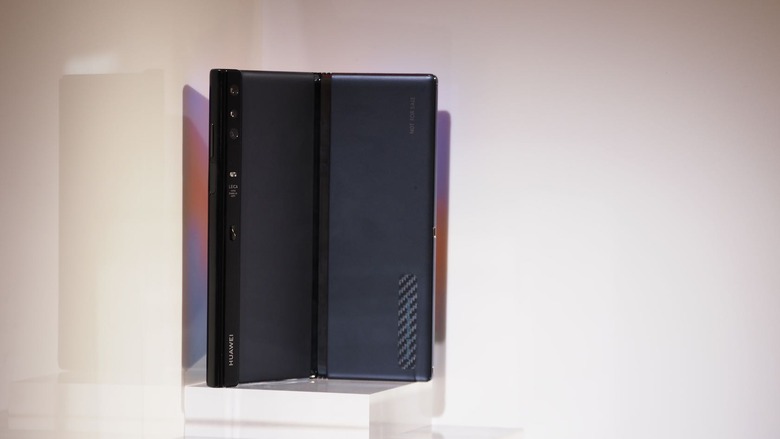
The antennas are fully integrated into the chassis, and Huawei is promising up to a 4.6 Gbps download speed, carrier-depending of course. That's potentially ten times the bandwidth you'd find on a current 4G LTE network, and enough to download a 1GB video in just three seconds. Since Huawei also makes 5G network infrastructure, Gauden points out, it could do its own testing of the Mate X on a real 5G network in-house.
Even out of 5G coverage, though, the phone should still wow. Where the Mate X isn't display, Huawei gave it a fresh coat of paint. The striking Interstellar Blue hue can be seen on the top, bottom, and the rear of the device. Huawei has also developed a special case for the Mate X, which supports the flexible screen.
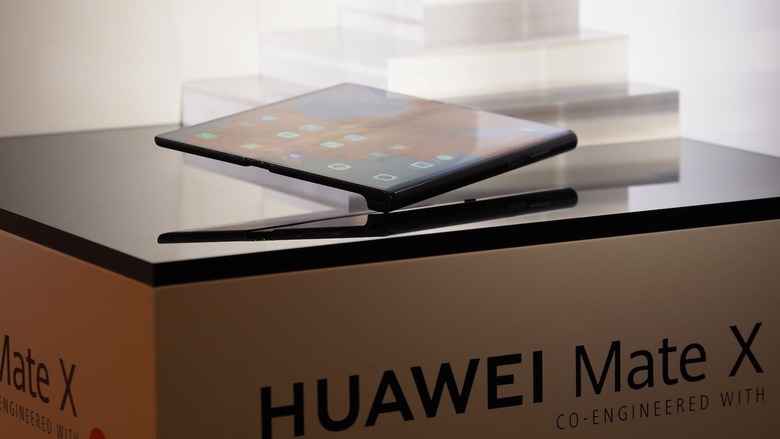
Inside the 5.4 mm chassis lives two batteries, yielding a total of 4,500 mAh. Samsung's Galaxy Fold falls slightly short of that, at 4,380 mAh. It's massive, and rightly so considering the equally massive display it's expected to power, not to mention the 5G and Kirin 980 chipset.
Arguably even more impressive is the new 55W Supercharge charger. Within 30 minutes, Huawei promises, you can charge the Mate X up to 85-percent – or around 3,825 mAh – from fully discharged. It should honestly raise the bar when it comes to topping up the battery while you're on the go.
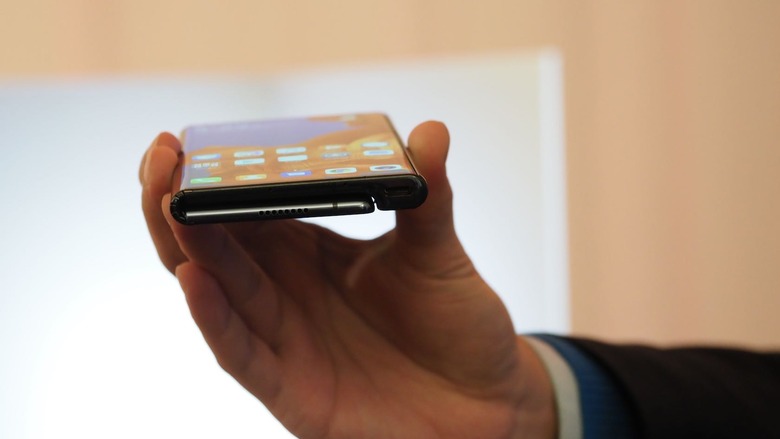
Impressive as this all is, there are still plenty of questions to be settled. Gauden didn't go into detail about the Mate X's "new Leica camera system," though given Huawei's recent handiwork on the Pro series I don't think it's unfair to expect big things.
Update: The Huawei Mate X will be priced at 2,299 Euro with 512GB of storage. That works out to around $2,600, which is considerably more than the $2,000 Samsung Galaxy Fold.
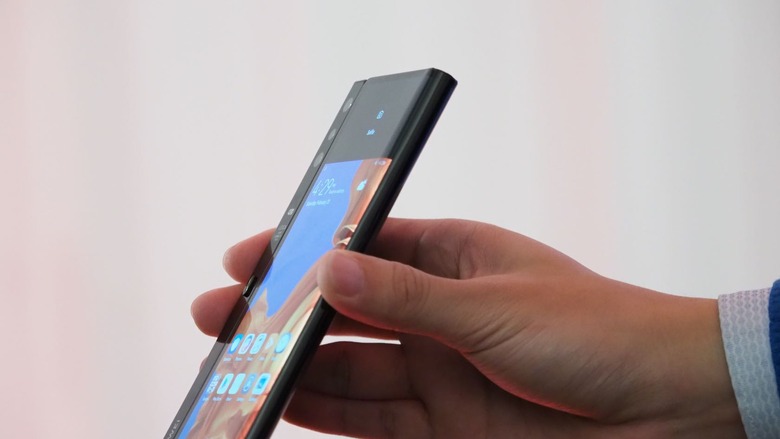
The Mate X and the Galaxy Fold will undoubtedly be niche devices when they launch. All the same, over time and as prices drop, I do expect that the technology they debut will increasingly become the norm. Squeezing both the usability of a phone and a tablet into a single device is just the sort of convergence that the smartphone has epitomized over the past decade. It may be early days for foldables – and for 5G, for that matter – but the future's looking bright.
